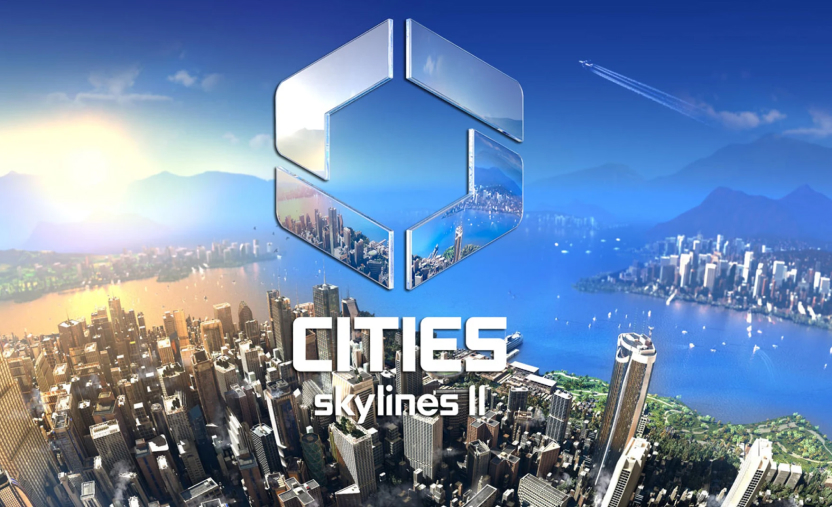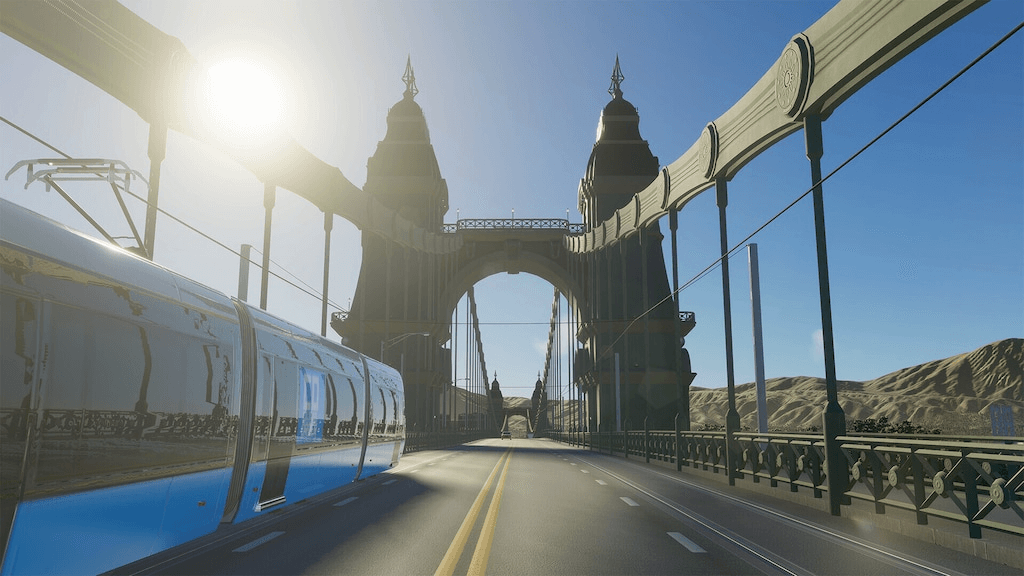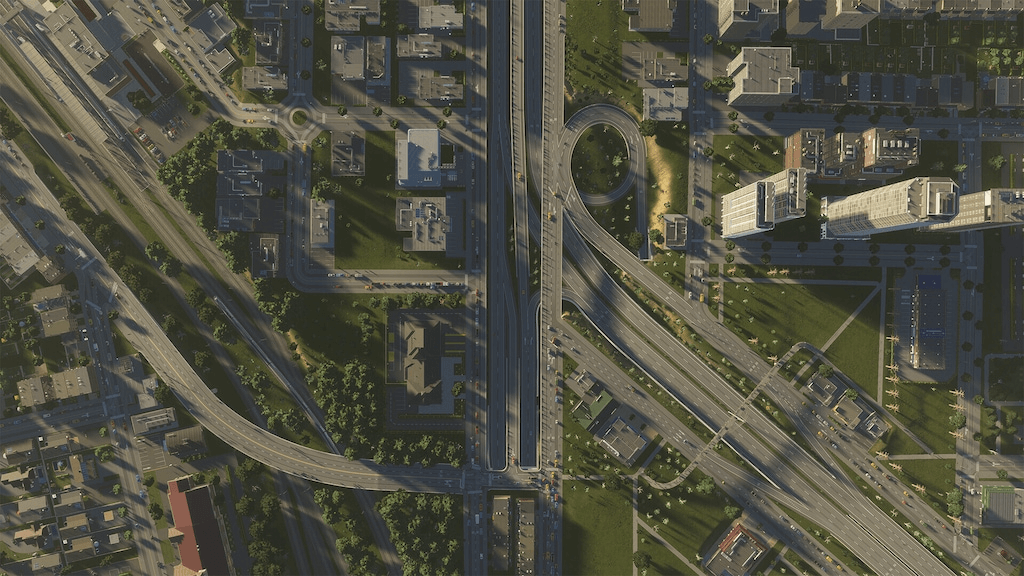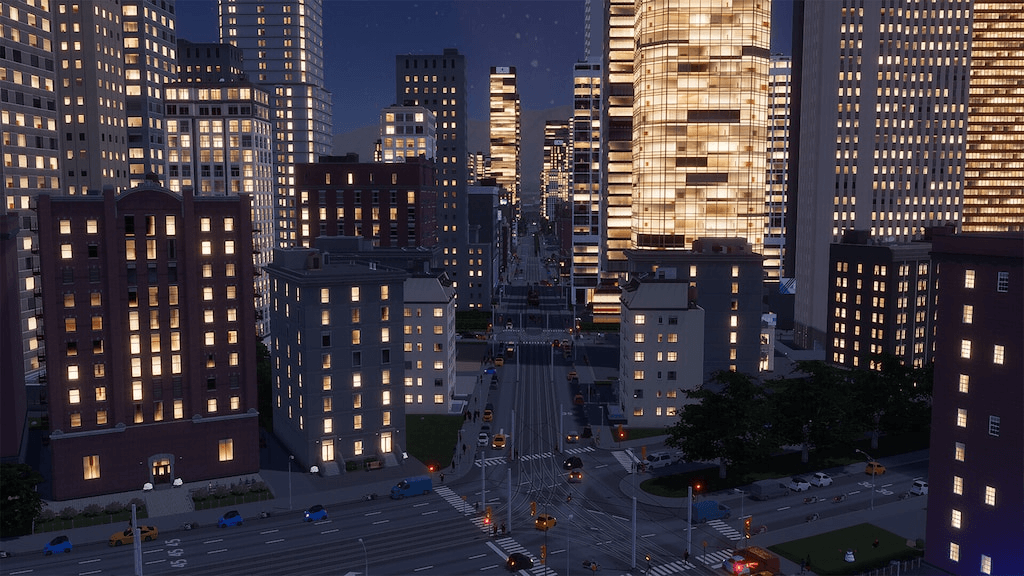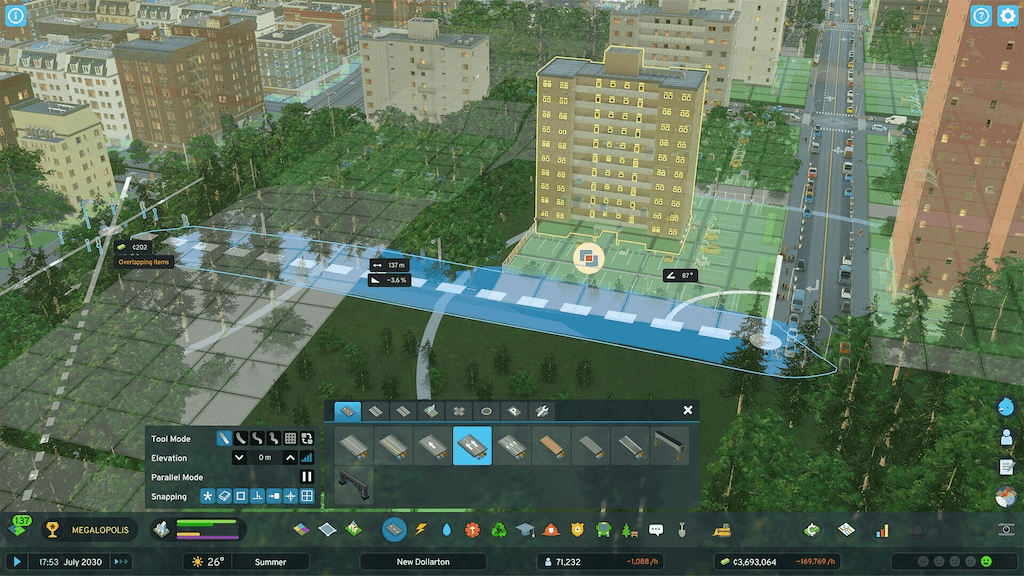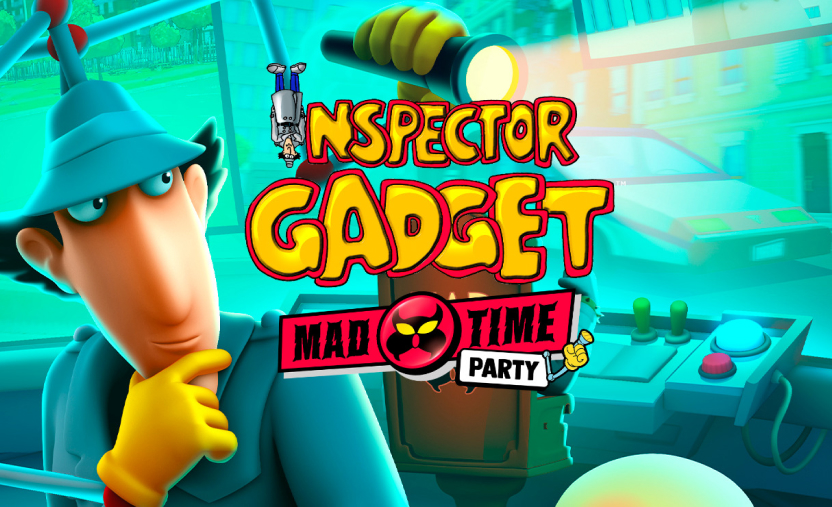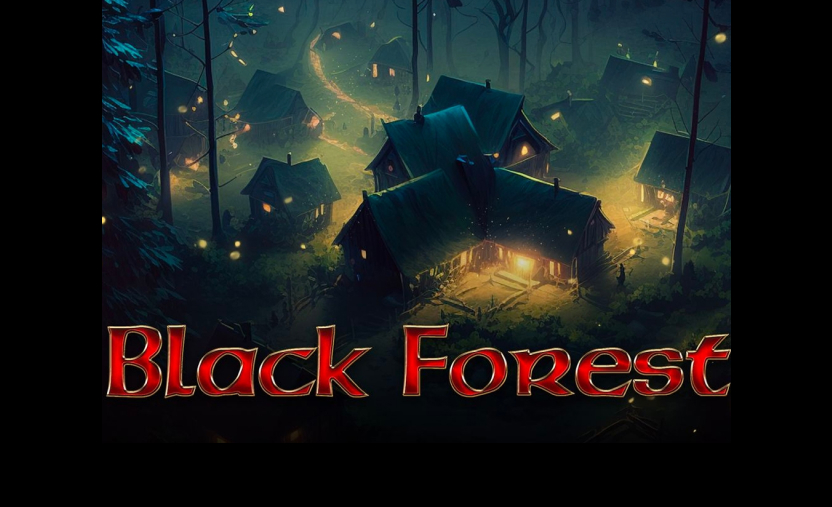Cities: Skylines II
Cities: Skylines II for PC is a city building game, the sequel to the first game with the same name. The player is the developer of a plot of land on which they must create a city. Players can lay down roads, zoning, utilities, and city services to attract residents and businesses. You can also set city policies like taxes and edicts to influence how the city grows – and spend the tax money on more expansion, better services and improved infrastructure.
About the Game
Initially you are limited to nine tiles of building space but you can purchase additional tiles from city funds – the above-mentioned tax, amongst other earning. Nine tiles was the upper limit of the previous game (it was twenty-five in the remastered edition that was for consoles): this game allows the player ultimately to go up to a hefty 441 tiles. This means that the new map for Cities Skylines 2 tops out at 159km2 which is the same size as the entire country of Liechtenstein, in Europe. Buildings can be taller than before, so even within that nine tile starting point, you can do more. You must create trade routes to feed your city and keep your residents happy – this is even more important than before as population controls – previously set to around 65,000 people – have been done away with. Each map in the game has a preset climate that influences the way weather patterns form. The weather and the population are all set in day-night and annual cycles, so people’s productivity will increase and decrease with the time of year. The cold winters bring snow and ice, with grey skies, while summer means flooding and extreme events like tornadoes. You must set up disaster response facilities and services within the city to cope with these annual events. These services will be ranged alongside regular policing and fire departments, which have also been improved. You can now assign these services to set areas so their response times are quick and efficient. You will also set up public services like education, safety boards and so on, right down to sanitation services. Unlike the first game, in this version, you will also worry about the welfare of your population, communication systems and even mortuary services – and all of these can be expanded and upgraded once they are in place. The game acknowledges the existence of other cities outside the game, and that means that you can arrange imports and exports. This is managed through a technology tree which is unlocked through play. Do note that weather affects your import and export network, just as it does your in-game public transport network.The Nitty Gritty
The game has vastly improved and expanded upon the city building system that fans enjoyed, while adding more to the transport and economic systems, boosted construction methods and now allows for much more precise customisation – and even some advanced modding capabilities too. See below for some of the improvements in detail.What’s New and Improved?
These are just some of the new and improved features of the game – see how many others you can unlock:- You have more fine-tuning control on the zoning of your city, able to designate residential, commercial, and industrial zones, and even more niche ones such as mixed-used residential.
- Signature buildings can be unlocked through specific milestones and placed within zones to improve the desirability of the area and the quality of life of your populace in the area.
- The first game relied purely on distance to plot routes for the population: this has been tweaked to use traffic levels, toll costs, comfort and even personal preferences. There's a complex AI pathfinding system that will give more realism to how citizens navigate your city.
- Along with realistic daily weather events, you can expect to experience tornados, forest fires, and hailstorms in random events – hopefully not all at the same time.
- In the reformed road usage all vehicles will now use all lanes, preventing needless traffic but introducing levels of danger when navigating the roads. And, like in life, delivery trucks and citizens will play it safe, while emergency vehicles are more likely to speed or do dangerous U-turns in traffic.
- You can treat the game like a human simulation game this time, following members of your population from start to finish – birth to death – and generally being as nosy as you like. You’ll even be awarded a Little Stalker achievement if you do thoroughly enough!
- Your population can suffer from homelessness, an entirely new feature. To prevent this, you must ensure that their income stays ahead of their outgoings otherwise they might end up living in the city parks.
System requirements
Minimum
OS: Windows 10 Home 64 Bit
Processor: Intel Core i7-6700K | AMD Ryzen 5 2600X
Memory: 8 GB RAM
Graphics: Nvidia GeForce GTX 970 (4 GB) | AMD equivalent
Recommended
OS: Windows 10 Home 64 Bit | Windows 11
Processor: Intel Core i5-12600K | AMD Ryzen 7 5800X
Memory: 16 GB RAM
Graphics: Nvidia GeForce RTX 3080 (10 GB) | AMD equivalent















